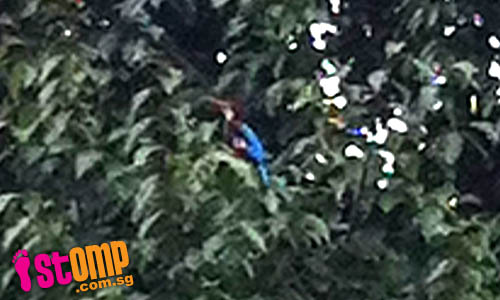
STOMPer birdwatcher says he spotted this unfamiliar bird with bright blue feathers up a tree at Bukit Gombak. He wonders if it is a rare species.
The STOMPer wrote:
"I spotted this strange-looking blue bird at Bukit Gombak and caught it in a photo.
"Where did it came from?
"Is this a rare species?
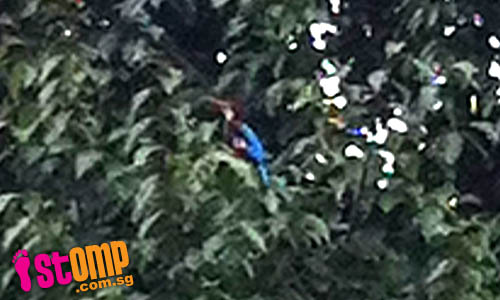
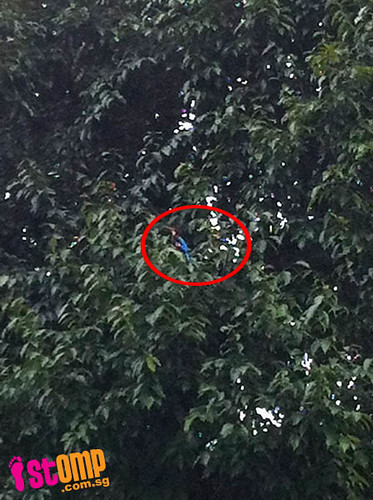
For what it's worth, at least the person who submitted this article actually noticed the bird, and didn't end up guessing that it was an escapee from the Jurong Bird Park.
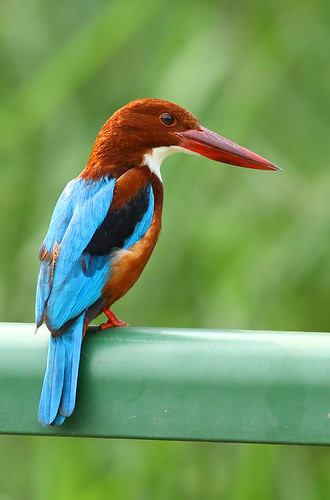
(Photo by kampang)
The white-throated kingfisher (Halcyon smyrnensis) is considered to be quite a common native bird, regularly seen in many habitats, from mangroves and other coastal areas, to the banks and edges of inland ponds, canals and reservoirs. Despite its name, this species is not particularly reliant on fishes and other aquatic prey, and can also be found far from water, in forest edges and woodlands, scrub, and urban parks and gardens.
Shirley, who writes at Life's Indulgences, has documented the antics of a pair of white-throated kingfishers nesting at the back of her house over 2 breeding seasons: here is her first post, and the final post is here.
The white-throated kingfisher not only takes small fishes, tadpoles, and crustaceans, but also feeds on earthworms, insects and spiders, frogs, lizards and small snakes. Even rodents and smaller birds have also been known to fall prey.
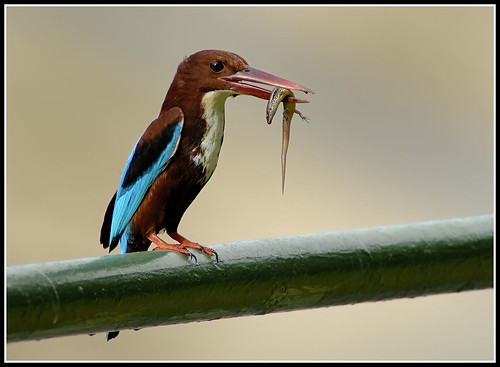
White-throated kingfisher with skink prey;
(Photo by Mendis)
Interestingly, the most common kingfisher species found throughout Singapore is the collared kingfisher (Todiramphus chloris), a bird that is similar to the white-throated kingfisher in its habits. However, in Peninsular Malaysia, the collared kingfisher is more prevalent in mangroves and other coastal habitats, largely leaving the inland areas to the white-throated kingfisher. It has been suggested that the collared kingfisher's presence away from the coast is largely a recent occurrence, the result of an opportunistic and adaptable species moving in to take advantage of deforestation.
If I'm not wrong, it is still not known whether the collared kingfisher and white-throated kingfisher fill identical ecological niches and hence compete over resources. How do these 2 species, along with the 6 other kingfisher species known to be residents or migrants here, manage to coexist?
As an aside, I don't mean to be snarky, but I do wonder how a person ignorant of the white-throated kingfisher's status in Singapore can give himself the nickname of 'birdwatcher'.